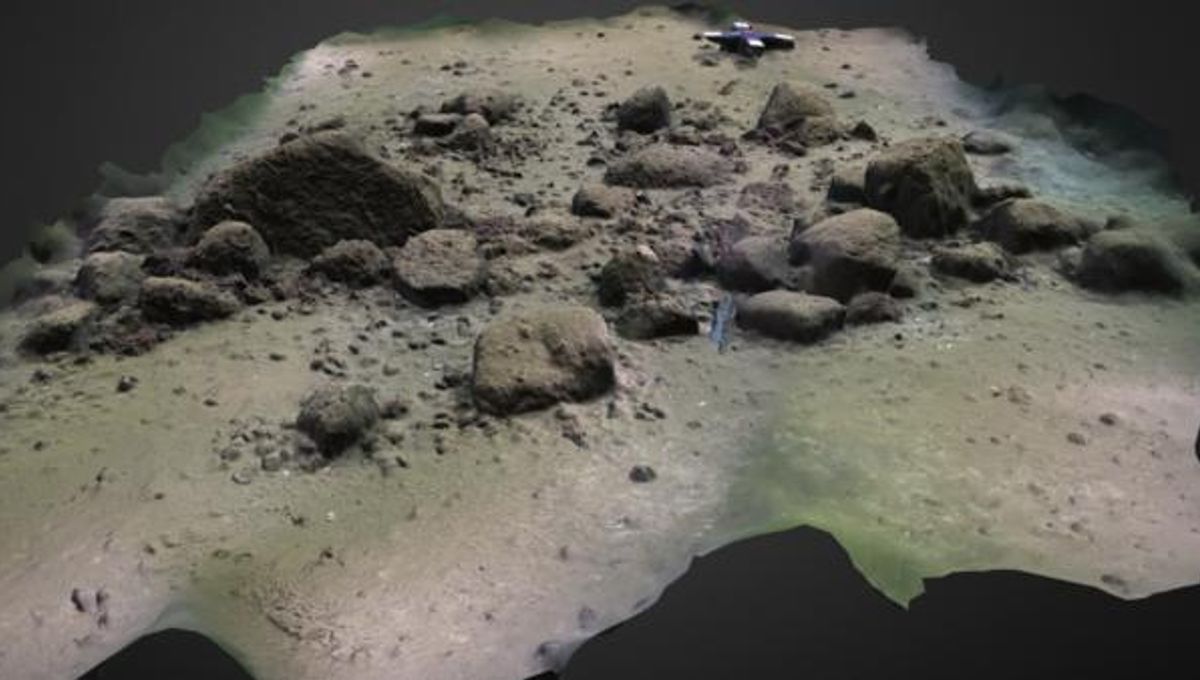
Along the murky coast of the Baltic Sea, archaeologists have found the submerged ruins of a megastructure that was built over 10,000 years ago. Measuring almost 1 kilometer (0.6 miles) in length, the immense structure was likely created by hungry Stone Age hunters with a taste for reindeer.
If workings are correct, it would make the site one of the oldest human-made hunting structures on Earth, plus one of the largest known Stone Age structures in Europe.
Known as the Blinkerwall, the structure was recently discovered in the Bay of Mecklenburg along Germany’s northern coast by a team from Kiel University, Rostock University, and the Leibniz Institute for Baltic Sea Research.
They used a combination of ships and submarine drones to survey the area, collecting sonar data on the shape and size of the long-lost structure.
Located on the shore at a depth of 21 meters (68 feet), the Blinkerwall is made of at least 1,673 individual stones, most of which are shorter than 1 meter (3 feet), placed side by side over a distance of 971 meters (3,185 feet). The sheer number of rocks, as well as their organized placement, told the researchers that the formation was not crafted by natural processes.
While the Blinkerwall has since been lost to the sea, the site was on dry land around 10,000 years following the end of the last Ice Age. However, it was ultimately flooded due to sea level rise sometime between 8,600 to 8,000 years ago.
This was a time when much of Northern Europe was swamped by rising seas. Around 8,200 years ago, the landmass that connected Britain to mainland Europe – known as Doggerland – was flooded with water due to a tsunami caused by a submarine landslide.
The researchers explain that the “most plausible functional interpretation” for the Blinkerwall is that it was used as a gigantic structure to aid the hunting of large ungulates, primarily the reindeer that roamed the region around this time.
The wall’s topographic orientation suggests it would have crossed paths with the reindeer’s biannual migration routes across the North German Plain. By channeling the herds of wandering beasts into an enclosed dead-end, they would be easy pickings for Neolithic hunter-gatherers who were quickly learning to master the art of reindeer hunting.
Similar hunting structures have been found elsewhere in the world. Beneath Lake Huron, one of the five Great Lakes of North America, you can find a 9,000-year-old hunting structure that led caribou into a cul-de-sac formed by the natural cobble pavement.
At 10,000 years old, the Blinkerwall is a whole millennia older and likely represents one of the oldest human-made hunting structures in the world. On top of that, there are barely any other similar structures associated with Stone Age Europe, making the recent discovery all the more exceptional.
The new study is published in the journal Proceedings of the National Academy of Sciences.
Source Link: Sunken Ruins Of A 10,000-Year-Old Megastructure Found In The Baltic Sea